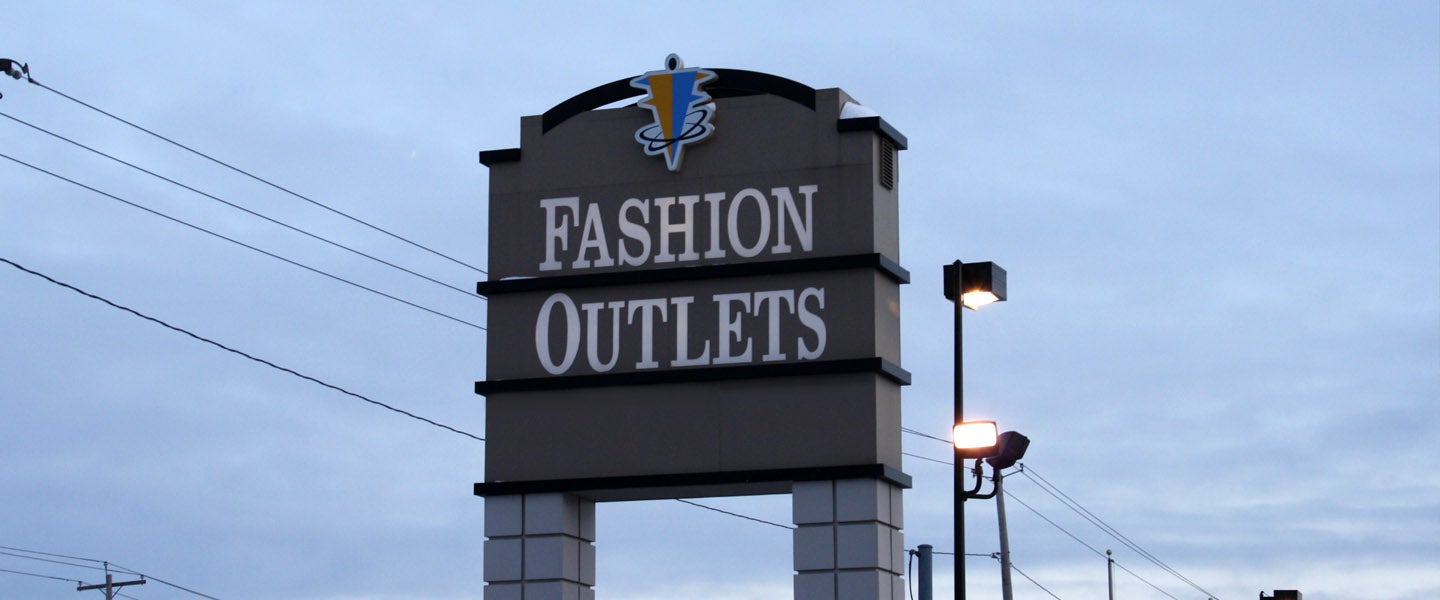There’s a holy land just 55 miles north of Chicago. Nestled between I-294 on the Tri-State Tollway and an always packed Culver’s lives a vibrant community of 90 retailers known as the Pleasant Prairie Premium Outlets.
Growing up halfway between Milwaukee and Chicago — a land of highways, cheese outposts and forest preserves — meant frequent trips to Pleasant Prairie. After Sunday Mass, I’d embark on the 30-minute drive to the mall with my mom, both of us eager to take refuge from mundane suburbia in a massive Nike store full of tacky but well-priced running shoes. We’d return home high off the synthetic fumes of newly acquired mass-produced gear.
Like all major brick-and-mortar commerce, the outlet mall is on life support. 2018 Cyber Monday sales hit a record-breaking $7.9 billion, while 2019 store closures are trending toward the highest levels ever. Still-expanding retailers like Free People and Anthropologie are moving out of the mall for storefronts in trendy urban neighborhoods. The days of the massive suburban mall are past us, so much so that even teens are nostalgic for “mallwave” music optimized for abandoned malls.
But there’s something entirely special about the suburban outlet mall — a monument of a fading era in which buying discounted clothes was an active destination rather than the mindless culmination of several clicks.
The Teens Who Listen to ‘Mallwave’ Are Nostalgic for an Experience They’ve Never Had
The outlet mall offers a unique experience that can’t be replicated online. They’re amusement parks for the fashionably frugal. Many are even themed, featuring tacky decor to guide you from one retailer to the next. In Michigan, surrounded by the beach towns where affluent Chicagoans spend their summers, is Lighthouse Place Premium Outlets. This nautical-themed mall featured Ann Taylor Loft and North Face stores with wood facades painted in off-white shades. Of course, Martha Stewart would never be caught dead here. But as a little kid, I imagined I might run into her shopping for boat shoes at Sperry.
If you’re looking for deals on last year’s fashion, outlet malls are an asset. Sure, factory store merchandise might be made of less-durable wools and (fake) leathers than flagship retailer outposts, but that’s to be expected when you’re paying $35 for what retails at $50. Plus, some outlets house their own clothing lines. When I was a teen, my Urban Outfitters outlet offered a different set of floral button-downs than the ones my friends wore.
Plus, for me, wading through racks of marked-down Gap chinos (all with wonky seaming) to find the one perfectly made pair remains a spiritual experience. This is the temple where budding style icons seek answers and find themselves. It’s a reminder that while suburbia might be oppressively monotone, there are hidden joys to be found — like the satisfaction of finding a $25 pair of perfectly fitting pants, the last remaining item in your size. (Pro-tip: As long as the waist is right, you can use the money saved and get the rest tailored.)
I can’t argue that we should resuscitate outlet malls. As my colleague Magdalene Taylor writes on the rise of abandoned-mall YouTubers, these massive spaces are “shells that evoke the destruction of climate change and late-stage capitalism.” Pleasant Prairie is over 26,680 square feet of concrete on what once was… actual prairie. Recent business news affirms what we all know: The outlets aren’t likely to do well in the shift to online shopping.
So even if the heyday of multiple acres of retail is behind us, I’ll always feel a pang in my chest passing by a doomed, depressing-looking outlet mall on the highway: It was my first foray into fashion. I think of my mom shopping for shoes at Cole Haan while I roamed the grounds. I’d get lost in the food court, taking in the smell of burning Sbarro pizzas before making my way to American Eagle to try on four pairs of cargo shorts in different pastel colors. 2008 was… let’s call it a unique time in my fashion journey; still, I made it my own.
If you compliment my style today, though, I’ll tell you the truth: I owe it all to Pleasant Prairie.

